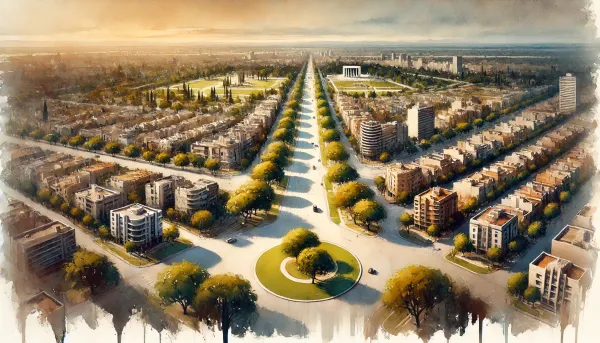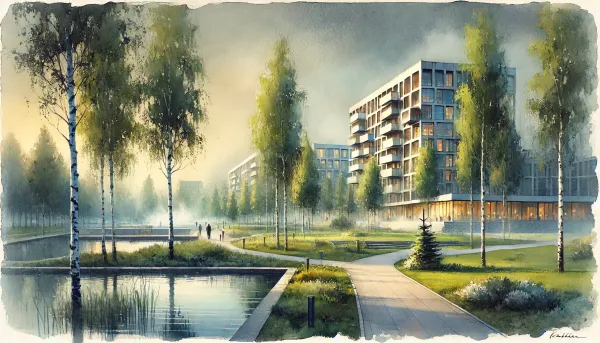Milton Keynes

Milton Keynes, established in 1967, is one of the UK’s most successful post-war new towns, designed to accommodate London’s overspill and create a modern, efficient urban environment. Built with a grid road system, extensive green spaces, and a strong emphasis on car accessibility, it contrasts with traditional British cities. The town has grown rapidly, now home to over 280,000 people, and has developed a strong economy in finance, logistics, and tech sectors. Recent planning efforts focus on urban densification, improved public transport, and sustainability, as its car-centric design poses long-term challenges. With continued expansion and investments in autonomous transport and smart city technologies, Milton Keynes remains a key model for planned urban growth in the UK.
Milton Keynes is a true new city, though it does not officially hold city status in the UK. Established in 1967 as part of the UK’s post-war new town program, it was designed to accommodate London’s overspill population and create a modern, planned urban area. Unlike a district, which is an extension of an existing city, Milton Keynes was built from scratch on largely undeveloped land in Buckinghamshire, incorporating existing villages.
Designed with a grid road system, green spaces, and mixed-use development, it has grown into a major economic center with over 280,000 residents. While often called a "new town," its scale, governance, and urban independence make Milton Keynes a true planned new city.
Milton Keynes is one of the most successful new towns ever built, growing into a dynamic, economically strong, and highly livable city. While it still has car dependency and identity challenges, it has far exceeded the expectations of most planned cities worldwide.
Strengths:
- One of the UK’s Most Successful New Towns – Planned in the 1960s to decentralize growth from London, Milton Keynes has grown into a thriving city with over 285,000 residents.
- Strong Economic Base – Home to tech firms, logistics hubs, financial services, and retail giants, making it one of the fastest-growing economies in the UK.
- Excellent Transport & Connectivity – Located midway between London and Birmingham, with fast rail connections, major motorways (M1), and a planned future East-West Rail link.
- High Quality of Life – Features well-designed parks, walkable districts, and a strong housing market, appealing to families and professionals.
- Sustained & Organic Growth – Unlike many planned cities, Milton Keynes has continuously evolved, adapting to new economic and social trends.
Challenges:
- Car-Centric Design – The original plan prioritized grid roads and car dependency, making public transport weaker compared to older UK cities.
- Still Lacks Historic & Cultural Depth – While growing, Milton Keynes is often seen as functional rather than culturally rich, with fewer historic landmarks or a deep-rooted identity.
- Housing & Cost Pressures – As it succeeds, housing demand is rising, pushing up prices and making affordability an emerging issue.
| Year | Event | Population |
|---|---|---|
| 1967 | Designation of Milton Keynes as a new town | ~60,000 |
| 1971 | First major housing scheme (Galley Hill, Stony Stratford) | ~65,925 |
| 1981 | Milton Keynes Central railway station opened | ~122,351 |
| 1991 | Church of Christ the Cornerstone completed | ~176,304 |
| 2001 | Xscape entertainment complex opened | ~207,037 |
| 2011 | Milton Keynes Theatre and Art Gallery opened | ~248,821 |
| 2021 | Milton Keynes granted city status | ~287,000 |




